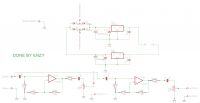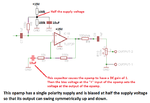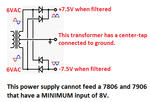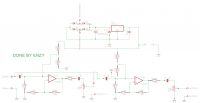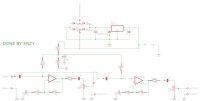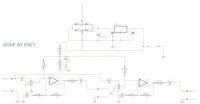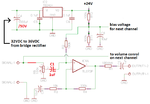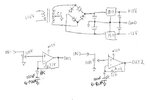Audioguru
Advanced Member level 7
- Joined
- Jan 19, 2008
- Messages
- 9,456
- Helped
- 2,151
- Reputation
- 4,302
- Reaction score
- 2,008
- Trophy points
- 1,393
- Location
- Toronto area of Canada
- Activity points
- 59,709
Now your transformer produces 24VAC so its peak voltage is too high at 34V. Didn't you read the datasheet for the Texas Instruments uA7815? It says its maximum recommended input is 30V.
Your supply has a single polarity and the opamps are biased at ground so when the input swings negative then the opamps rectify the sound producing severe distortion and might be destroyed.
Why don't you understand that the opamps with a single polarity supply MUST be biased at half the supply voltage so that their output can swing up and down with the audio signal??
An opamp with a dual polarity supply is biased at 0V (which is half the supply voltage) so that the output can swing up and down.
Again, your opamps amplify DC, look here:
Your supply has a single polarity and the opamps are biased at ground so when the input swings negative then the opamps rectify the sound producing severe distortion and might be destroyed.
Why don't you understand that the opamps with a single polarity supply MUST be biased at half the supply voltage so that their output can swing up and down with the audio signal??
An opamp with a dual polarity supply is biased at 0V (which is half the supply voltage) so that the output can swing up and down.
Again, your opamps amplify DC, look here:

